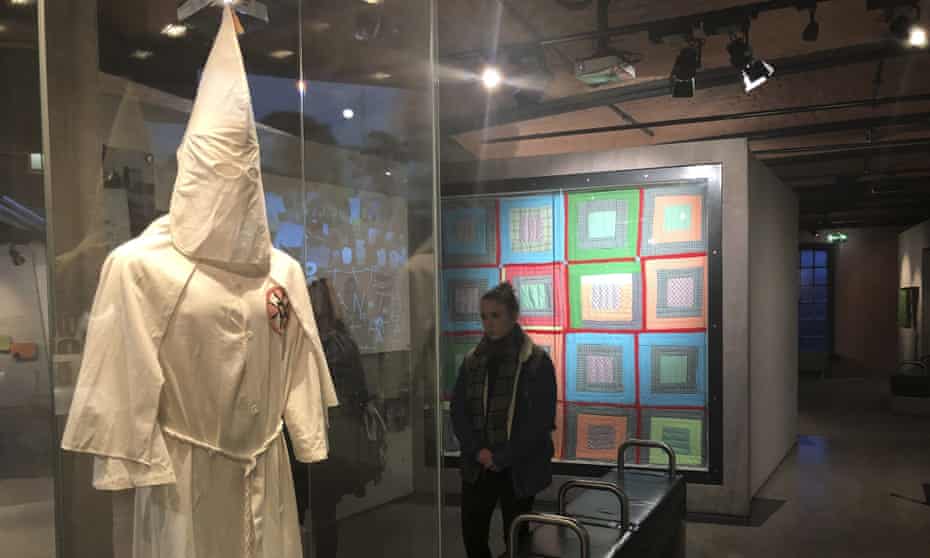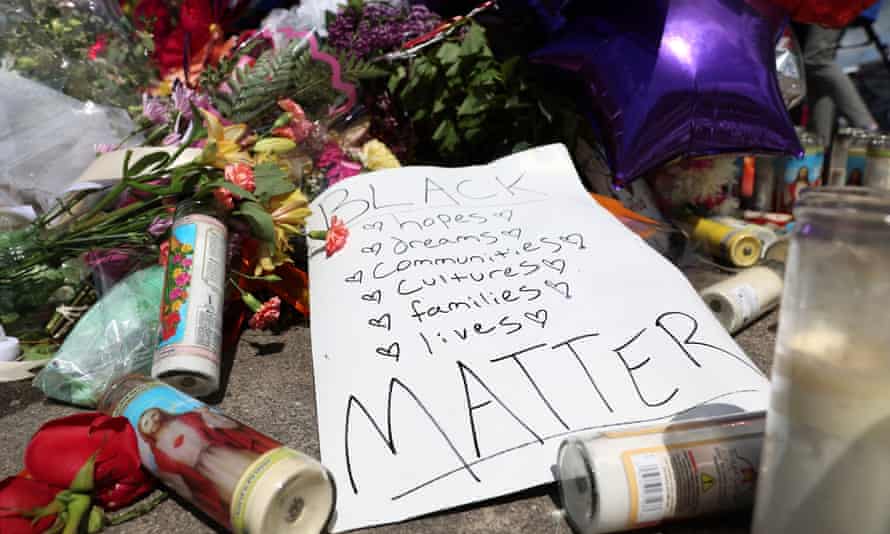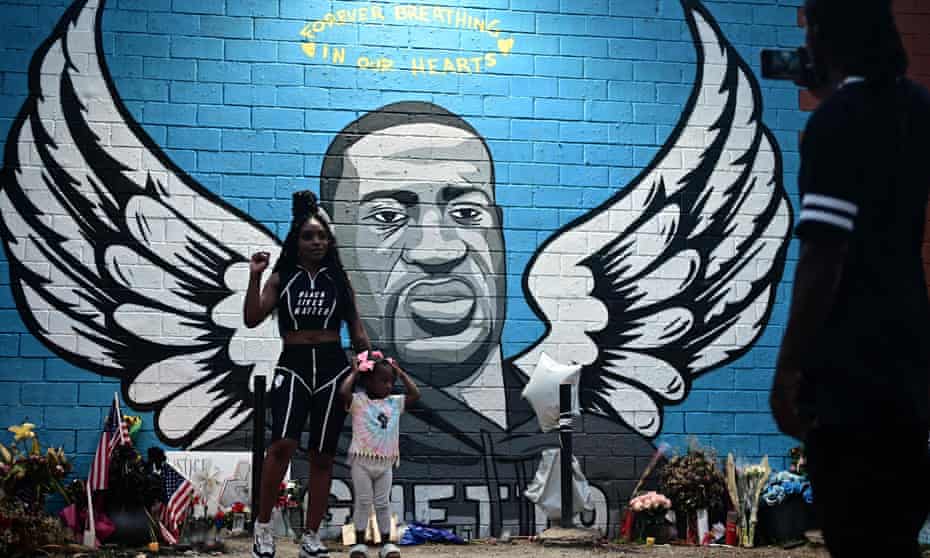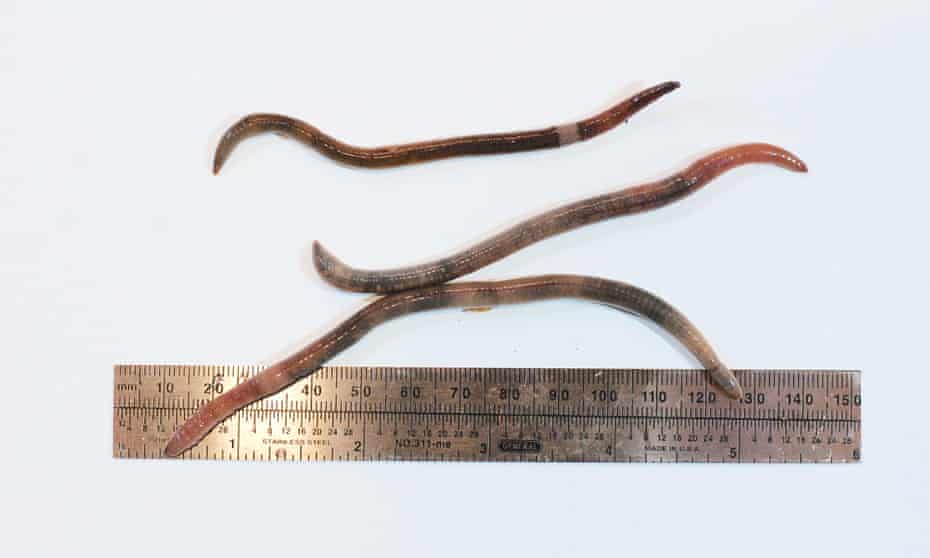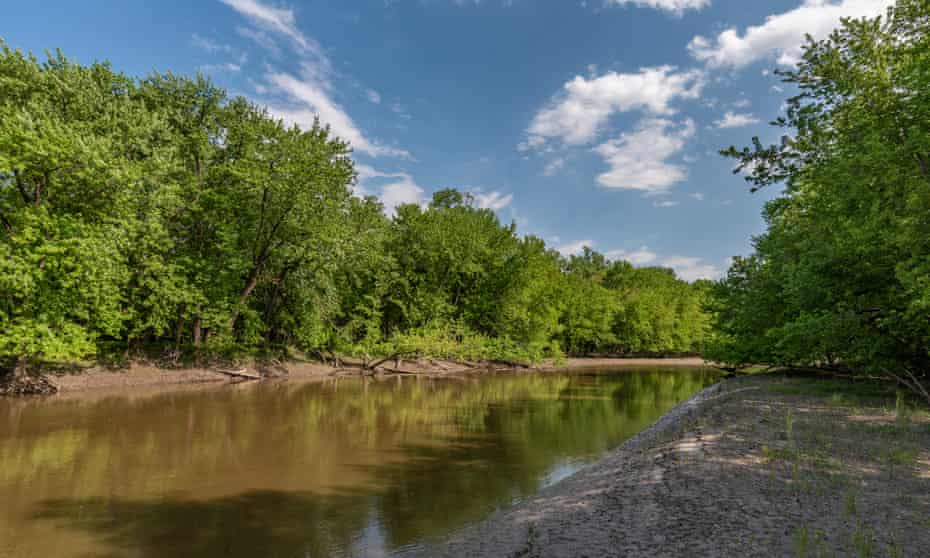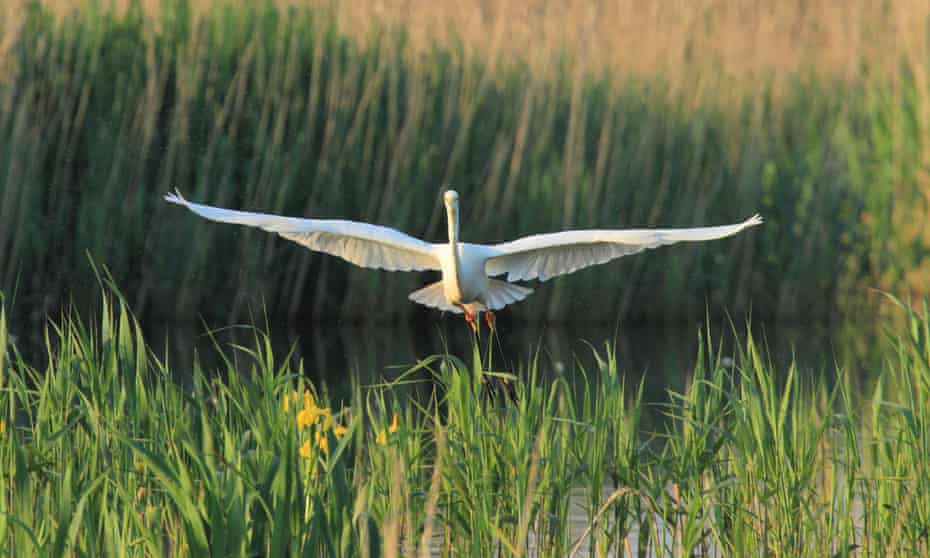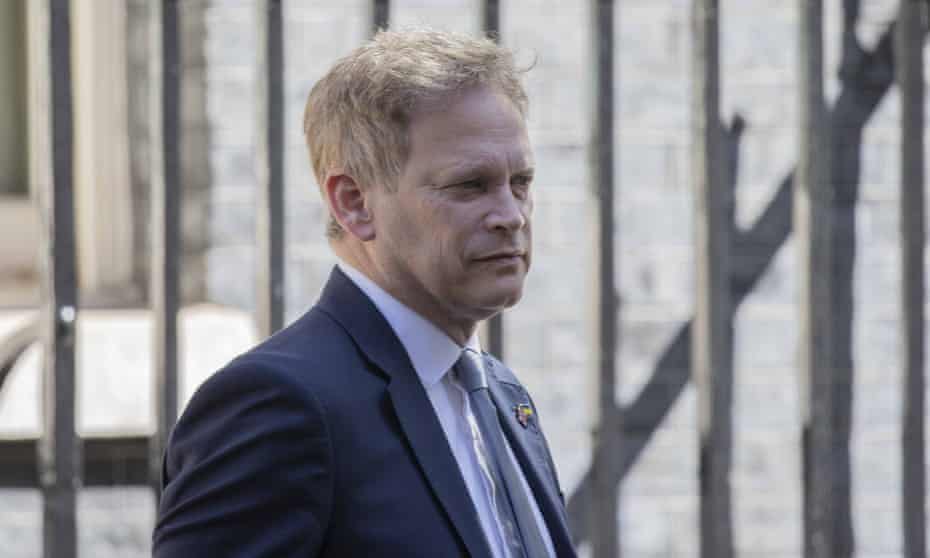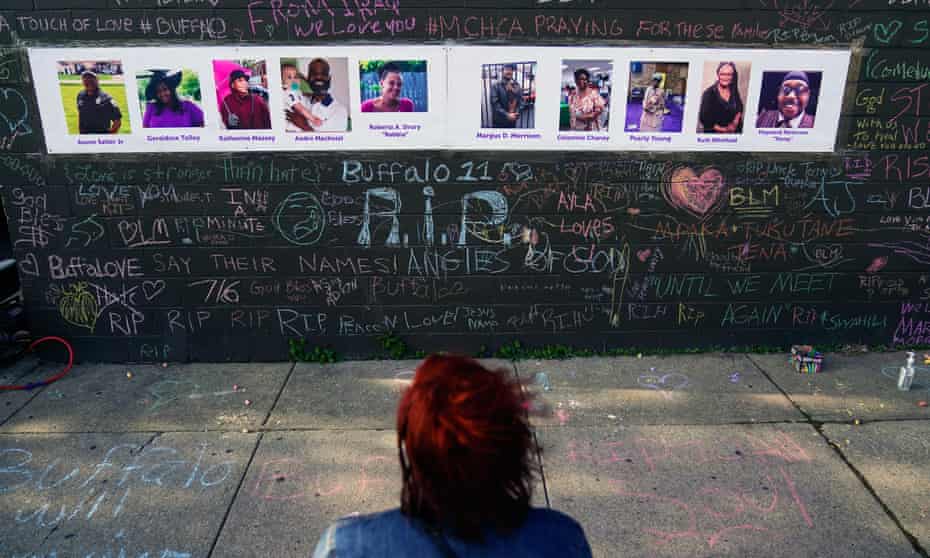
Sherman Indian high school – previously called the Sherman Institute – in 1903. Photograph: Sepia Times/UIG/Getty Images
Sherman Indian high school is among the last remnants of a brutal history that students and government are reckoning with
Hilary Beaumont
Sherman Indian high school is among the last remnants of a brutal history that students and government are reckoning with
Hilary Beaumont
THE GUARDIAN
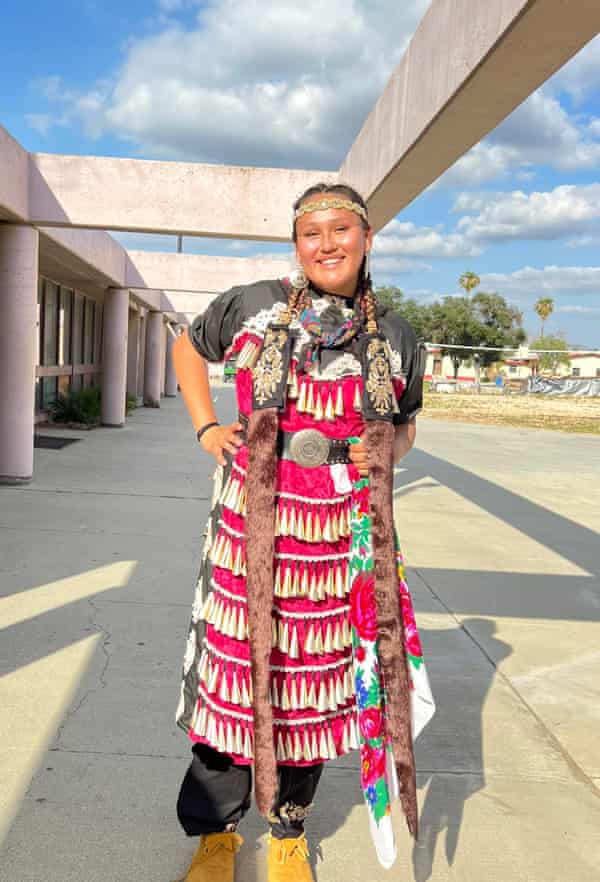
History and change
The US and Canada are facing a reckoning over their use of boarding schools to assimilate Indigenous children.
A US government report released last week found at least 53 burial sites at boarding schools containing hundreds of graves, with officials expecting to discover thousands more.

‘You have to live in both worlds’
Medicine has felt homesick, but unlike in the old days, she Snapchats and calls her aunt.
She enjoys her Native studies class and recently visited SeaWorld and Universal Studios. But she noticed that other students don’t know their culture and language, and they struggle with anxiety, depression and intergenerational trauma. “We’re in a Native school for Native children, and you’re seeing more and more students being whitewashed, in a sense of not knowing their cultural and spiritual ways,” she said.
She explained that many students would rather blend into the non-Indigenous world than express their culture. “You kind of have to live in both worlds,” she said, but some step too far into “the white man’s world” and don’t realise how much harm it does to them spiritually. “It’s sad that a lot of people are scared to embrace who they are. I’m proud to be Native. I’m proud to be Lakota.”
Current and former Sherman teachers said it was rare to find a student who speaks their language. Medicine speaks Lakota, a severely endangered language, according to the Endangered Languages Project. She would enjoy taking a Lakota class if Sherman offered one.
Sherry Means, from the Cheyenne River Sioux Tribe, used to teach Lakota at Sherman but left and was not replaced. She had a positive experience at Sherman before a family matter pulled her home. “Today those boarding schools actually do save a lot of Indian kids from their life of poverty,” she said. But she doesn’t think they have fully reformed; she believes continuing federal control leads to a less creative curriculum that doesn’t allow students to immerse themselves in their languages. “The top-down management has always been in existence and really needs to change,” she said.
Medicine plans to apply to college but is considering her options. She wants to keep exploring the world.
She sees how much boarding school has changed, but with continued government management, she doesn’t believe they are truly reformed. “The only difference now is that we can wear whatever clothes we want, and we can talk to our family whenever we want. But at the end of the day, it’s still institutionalised.”
As we talk on the phone, Medicine digs into her lunch: a sub, fries, Gatorade and macaroni salad. “Sometimes they give us Indian tacos, but I could make it better,” she jokes. “It’s a hit and miss whenever they try. It’s never going to be as good as back at home.”
Sun 22 May 2022
With other students’ eyes on her, Wicahpi Medicine’s heart raced, but as she started dancing, she felt proud to embody her Lakota heritage. The beads on her jingle dress swished and her long braids bounced as she moved quickly and lightly in her moccasins.
“People think that we’re extinct – they think we don’t really exist anymore,” said the 17-year-old student, who goes by Kimmi. Dancing at Sherman Indian high school cultural week, she said she was showing “we are still here”.
Medicine is one of more than 200 students from 76 Native American tribes who come from across the country to attend the all-Native American boarding school, which opened in Riverside, California, over a century ago. It was one of hundreds of federally run boarding schools across the US that aimed to assimilate Native American children into white society by taking them from their families, chopping their hair short, and brutally punishing them for speaking their language and practising their culture. In 1901, the institution’s namesake, the congressman James Sherman, declared the school would represent “the redemption of a race”.
With other students’ eyes on her, Wicahpi Medicine’s heart raced, but as she started dancing, she felt proud to embody her Lakota heritage. The beads on her jingle dress swished and her long braids bounced as she moved quickly and lightly in her moccasins.
“People think that we’re extinct – they think we don’t really exist anymore,” said the 17-year-old student, who goes by Kimmi. Dancing at Sherman Indian high school cultural week, she said she was showing “we are still here”.
Medicine is one of more than 200 students from 76 Native American tribes who come from across the country to attend the all-Native American boarding school, which opened in Riverside, California, over a century ago. It was one of hundreds of federally run boarding schools across the US that aimed to assimilate Native American children into white society by taking them from their families, chopping their hair short, and brutally punishing them for speaking their language and practising their culture. In 1901, the institution’s namesake, the congressman James Sherman, declared the school would represent “the redemption of a race”.

Wicahpi ‘Kimmi’ Medicine: ‘We practise our way of life as our ancestors did.’
Photograph: Courtesy Wicahpi Medicine
Most of the schools have closed, but the government continues to operate a handful, including Sherman. The US says it has transformed the remaining schools, but students like Medicine feel echoes of the old system.
Today, signposts on the grassy grounds show reservation names and their distances from the school, reminding Medicine how far she is from home: Standing Rock, North Dakota, 1,453.9 miles. “It sucks a lot because there have been times this year that I’ve wanted to go back home, and I can’t,” she said.
Members of the Cheyenne River Sioux Tribe living in Fort Yates, North Dakota, Medicine’s family smudged, prayed, attended sweats and spoke Lakota.
“We practise our way of life as our ancestors did,” she said.
Medicine lived with her aunt, Kolette Medicine, who is a teacher, in a town of fewer than 200 people where there wasn’t much to do. She said alcohol and drug use were common, which Medicine and her aunt see as a direct consequence of the intergenerational trauma of boarding schools. Medicine attended an off-reservation public school where she felt it was “frowned upon to be Native”, and the on-reservation high school offered little hope. “I probably would have dropped out,” she said.
A friend told her about Sherman – students go on field trips to the beach and Universal Studios in Los Angeles, her friend said. The school also offered a clearer pathway to college. Medicine saw it as a chance to explore the world. She filled out an application form and called every day until she was accepted.
Before attending, she had a conversation with her aunt and grandmother about what it meant to go to boarding school. Few Native Americans are untouched by the dark legacy of the assimilation policy, and her grandmother was no exception. Born in 1946, she attended boarding school in California, where she wore her hair short and was given a white name, Medicine recalled.
“She never really talked about it. I knew it brought up hard feelings for her whenever I would ask,” Medicine said. Her aunt said Medicine’s grandmother shared fond memories of school friends, singing in a choir, and cheerleading.
Her grandmother was the one who passed down the language and culture. She gave her granddaughter the name Wicahpi Win, meaning “star woman”, referencing the belief that Lakota people come from the Milky Way.
“We just talked about the positive, the good things it would be for Kimmi,” Kolette Medicine said. “We thought she would have more opportunities there.”
Most of the schools have closed, but the government continues to operate a handful, including Sherman. The US says it has transformed the remaining schools, but students like Medicine feel echoes of the old system.
Today, signposts on the grassy grounds show reservation names and their distances from the school, reminding Medicine how far she is from home: Standing Rock, North Dakota, 1,453.9 miles. “It sucks a lot because there have been times this year that I’ve wanted to go back home, and I can’t,” she said.
Members of the Cheyenne River Sioux Tribe living in Fort Yates, North Dakota, Medicine’s family smudged, prayed, attended sweats and spoke Lakota.
“We practise our way of life as our ancestors did,” she said.
Medicine lived with her aunt, Kolette Medicine, who is a teacher, in a town of fewer than 200 people where there wasn’t much to do. She said alcohol and drug use were common, which Medicine and her aunt see as a direct consequence of the intergenerational trauma of boarding schools. Medicine attended an off-reservation public school where she felt it was “frowned upon to be Native”, and the on-reservation high school offered little hope. “I probably would have dropped out,” she said.
A friend told her about Sherman – students go on field trips to the beach and Universal Studios in Los Angeles, her friend said. The school also offered a clearer pathway to college. Medicine saw it as a chance to explore the world. She filled out an application form and called every day until she was accepted.
Before attending, she had a conversation with her aunt and grandmother about what it meant to go to boarding school. Few Native Americans are untouched by the dark legacy of the assimilation policy, and her grandmother was no exception. Born in 1946, she attended boarding school in California, where she wore her hair short and was given a white name, Medicine recalled.
“She never really talked about it. I knew it brought up hard feelings for her whenever I would ask,” Medicine said. Her aunt said Medicine’s grandmother shared fond memories of school friends, singing in a choir, and cheerleading.
Her grandmother was the one who passed down the language and culture. She gave her granddaughter the name Wicahpi Win, meaning “star woman”, referencing the belief that Lakota people come from the Milky Way.
“We just talked about the positive, the good things it would be for Kimmi,” Kolette Medicine said. “We thought she would have more opportunities there.”
History and change
The US and Canada are facing a reckoning over their use of boarding schools to assimilate Indigenous children.
A US government report released last week found at least 53 burial sites at boarding schools containing hundreds of graves, with officials expecting to discover thousands more.

Sherman Indian high school’s cemetery, seen last year, as a man encircles each grave with sage smoke.
Photograph: MediaNews Group/The Riverside Press-Enterprise/Getty Images


A US government report last week found at least 53 burial sites at boarding schools. Photograph: MediaNews Group/The Riverside Press-Enterprise/Getty Images
Advertisement
The report found that, from 1819 to 1969, there were 408 boarding schools running in every corner of the country. The federal government continues to operate four off-reservation boarding schools for Native American children through the Bureau of Indian Education (BIE), but in 2019, the BIE’s deputy assistant secretary Mark Cruz said the schools were “no longer in the business of assimilation” and “their purpose was transformed to support and respect tribal self-determination and sovereignty”.
The Sherman school, which is included in the report, has a cemetery with more than 60 graves, most containing the remains of students who died of diseases, explained Jean Keller, a historian who wrote a book about the Sherman Institute, as the school was previously known. Several children died in accidents: “One kid was killed because he was on the playing field and they were throwing a hammer and the hammer hit him in the head. Another kid was in the bakery and the oven blew up,” she said.
The US used a twin policy of land dispossession and boarding schools to separate Native Americans from their territories and culture. It was the cheapest and safest way to gain land for white people, the report found. Congress passed laws ordering parents to send their children to the schools and authorised the interior secretary to withhold rations from those who refused. Communities hid their children, but officials sent police to chase and capture them.
Sherman was “a place of incarceration”, said Clifford Trafzer, a history professor at the University of California Riverside who co-authored a book about the institute. Children were taught trades and sent to work on ranches as a way to integrate them into society. Today, Sherman looks very different. The Red Power movement in the 1960s and 70s saw Native Americans push for education that included their cultures and prepared students for college.
Howard Dallas, one of 16 siblings, was sent to Sherman with his three sisters in the 60s because his mother couldn’t care for them all. He said the school was “institutionalised” and taught them vocational training. “You could become a welder, painter, sheet metal worker or carpenter,” he said.
Matthew Levias Sr, another alumnus who attended in the 60s and became a star on the Sherman football team, said the school had taught him leadership. Dallas and Levias joined a student committee to push for better education and wrote a proposal to get the school accredited. “It started with the students. All the ideas came from the students,” Levias said.
The school was accredited in 1971 and renamed Sherman Indian high school, and laws followed: the 1975 Indian Self-Determination and Education Assistance Act eliminated the assimilation policy, and the 1978 American Indian Religious Freedom Act guaranteed the right to ceremony.
Today, the school hosts an annual powwow, and students take lessons in Native American fashion, basket weaving, native plant uses and the Navajo language. Most of the teachers and staff are Native American. Students learn a standard high school curriculum, and a Native Studies class teaches them American history, including the doctrine of discovery, an international law that European settlers used to justify taking Indigenous land – and boarding schools. At cultural week in April, students wore orange shirts to honour the children who had died.
Sherman is funded by and answers to the federal government, through the BIE. The school suffers from low student achievement that has been endemic in the BIE system for close to a century, according to a 2018 BIE report. Children leave home for months at a time, and staff are considered “in loco parentis”, meaning “in place of the parent”. And with more than 70 tribes represented but only Navajo classes offered, most students still do not learn their own language.
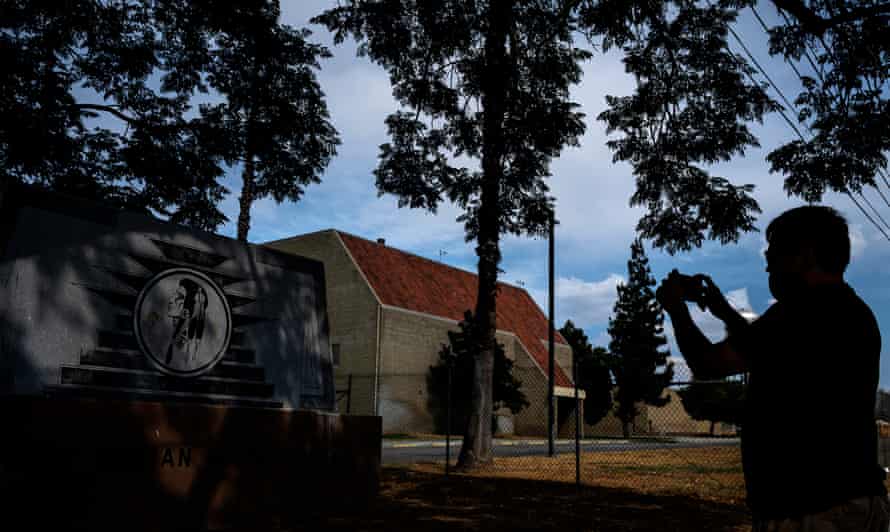
Advertisement
The report found that, from 1819 to 1969, there were 408 boarding schools running in every corner of the country. The federal government continues to operate four off-reservation boarding schools for Native American children through the Bureau of Indian Education (BIE), but in 2019, the BIE’s deputy assistant secretary Mark Cruz said the schools were “no longer in the business of assimilation” and “their purpose was transformed to support and respect tribal self-determination and sovereignty”.
The Sherman school, which is included in the report, has a cemetery with more than 60 graves, most containing the remains of students who died of diseases, explained Jean Keller, a historian who wrote a book about the Sherman Institute, as the school was previously known. Several children died in accidents: “One kid was killed because he was on the playing field and they were throwing a hammer and the hammer hit him in the head. Another kid was in the bakery and the oven blew up,” she said.
The US used a twin policy of land dispossession and boarding schools to separate Native Americans from their territories and culture. It was the cheapest and safest way to gain land for white people, the report found. Congress passed laws ordering parents to send their children to the schools and authorised the interior secretary to withhold rations from those who refused. Communities hid their children, but officials sent police to chase and capture them.
Sherman was “a place of incarceration”, said Clifford Trafzer, a history professor at the University of California Riverside who co-authored a book about the institute. Children were taught trades and sent to work on ranches as a way to integrate them into society. Today, Sherman looks very different. The Red Power movement in the 1960s and 70s saw Native Americans push for education that included their cultures and prepared students for college.
Howard Dallas, one of 16 siblings, was sent to Sherman with his three sisters in the 60s because his mother couldn’t care for them all. He said the school was “institutionalised” and taught them vocational training. “You could become a welder, painter, sheet metal worker or carpenter,” he said.
Matthew Levias Sr, another alumnus who attended in the 60s and became a star on the Sherman football team, said the school had taught him leadership. Dallas and Levias joined a student committee to push for better education and wrote a proposal to get the school accredited. “It started with the students. All the ideas came from the students,” Levias said.
The school was accredited in 1971 and renamed Sherman Indian high school, and laws followed: the 1975 Indian Self-Determination and Education Assistance Act eliminated the assimilation policy, and the 1978 American Indian Religious Freedom Act guaranteed the right to ceremony.
Today, the school hosts an annual powwow, and students take lessons in Native American fashion, basket weaving, native plant uses and the Navajo language. Most of the teachers and staff are Native American. Students learn a standard high school curriculum, and a Native Studies class teaches them American history, including the doctrine of discovery, an international law that European settlers used to justify taking Indigenous land – and boarding schools. At cultural week in April, students wore orange shirts to honour the children who had died.
Sherman is funded by and answers to the federal government, through the BIE. The school suffers from low student achievement that has been endemic in the BIE system for close to a century, according to a 2018 BIE report. Children leave home for months at a time, and staff are considered “in loco parentis”, meaning “in place of the parent”. And with more than 70 tribes represented but only Navajo classes offered, most students still do not learn their own language.

Sherman is funded by and answers to the federal government.
Photograph: MediaNews Group/The Riverside Press-Enterprise/Getty Images
Marsha Small, a Northern Cheyenne researcher whose work focuses on another operating off-reservation boarding school, Chemawa in Oregon, said many alumni were not fluent in their own languages. “That language ties them to the land. Their land is what their identity is,” she said. “My question to those boarding schools is: are you teaching that student their language? Because if you’re not, you are still committing the same type of genocide that was originated by the colonial system.”
Marsha Small, a Northern Cheyenne researcher whose work focuses on another operating off-reservation boarding school, Chemawa in Oregon, said many alumni were not fluent in their own languages. “That language ties them to the land. Their land is what their identity is,” she said. “My question to those boarding schools is: are you teaching that student their language? Because if you’re not, you are still committing the same type of genocide that was originated by the colonial system.”
‘You have to live in both worlds’
Medicine has felt homesick, but unlike in the old days, she Snapchats and calls her aunt.
She enjoys her Native studies class and recently visited SeaWorld and Universal Studios. But she noticed that other students don’t know their culture and language, and they struggle with anxiety, depression and intergenerational trauma. “We’re in a Native school for Native children, and you’re seeing more and more students being whitewashed, in a sense of not knowing their cultural and spiritual ways,” she said.
She explained that many students would rather blend into the non-Indigenous world than express their culture. “You kind of have to live in both worlds,” she said, but some step too far into “the white man’s world” and don’t realise how much harm it does to them spiritually. “It’s sad that a lot of people are scared to embrace who they are. I’m proud to be Native. I’m proud to be Lakota.”
Current and former Sherman teachers said it was rare to find a student who speaks their language. Medicine speaks Lakota, a severely endangered language, according to the Endangered Languages Project. She would enjoy taking a Lakota class if Sherman offered one.
Sherry Means, from the Cheyenne River Sioux Tribe, used to teach Lakota at Sherman but left and was not replaced. She had a positive experience at Sherman before a family matter pulled her home. “Today those boarding schools actually do save a lot of Indian kids from their life of poverty,” she said. But she doesn’t think they have fully reformed; she believes continuing federal control leads to a less creative curriculum that doesn’t allow students to immerse themselves in their languages. “The top-down management has always been in existence and really needs to change,” she said.
Medicine plans to apply to college but is considering her options. She wants to keep exploring the world.
She sees how much boarding school has changed, but with continued government management, she doesn’t believe they are truly reformed. “The only difference now is that we can wear whatever clothes we want, and we can talk to our family whenever we want. But at the end of the day, it’s still institutionalised.”
As we talk on the phone, Medicine digs into her lunch: a sub, fries, Gatorade and macaroni salad. “Sometimes they give us Indian tacos, but I could make it better,” she jokes. “It’s a hit and miss whenever they try. It’s never going to be as good as back at home.”
